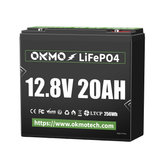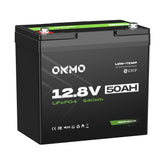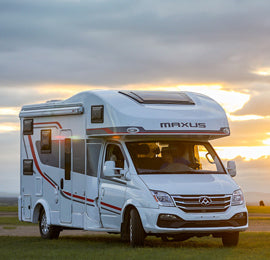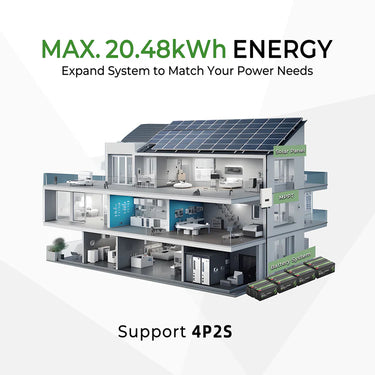How Long Do Golf Cart Batteries Last?
 When it comes to golf carts, the battery is the heart of the vehicle. Whether you use your cart for golfing, neighborhood rides, or as a utility vehicle, understanding how long your batteries last—and what affects their lifespan—is essential. In this article, we’ll explore in detail how long golf cart batteries last, what factors influence their performance, and how traditional lead-acid batteries compare to modern LiFePO4 (Lithium Iron Phosphate) batteries under the same conditions.
When it comes to golf carts, the battery is the heart of the vehicle. Whether you use your cart for golfing, neighborhood rides, or as a utility vehicle, understanding how long your batteries last—and what affects their lifespan—is essential. In this article, we’ll explore in detail how long golf cart batteries last, what factors influence their performance, and how traditional lead-acid batteries compare to modern LiFePO4 (Lithium Iron Phosphate) batteries under the same conditions.
 ⛳ 1. Average Lifespan of Golf Cart Batteries
⛳ 1. Average Lifespan of Golf Cart Batteries
The lifespan of a golf cart battery depends largely on the battery type, usage frequency, and maintenance habits.
🔋 Lead-Acid Batteries
Lead-acid batteries are the most common and affordable option found in many older golf carts. On average, a high-quality deep-cycle lead-acid battery lasts:
-
3 to 5 years with proper maintenance (regular watering, cleaning, and charging).
-
2 to 3 years with moderate use or poor maintenance.
Their lifespan can shorten dramatically if they’re frequently over-discharged or left uncharged for long periods.
⚡ LiFePO4 (Lithium Iron Phosphate) Batteries
LiFePO4 batteries, on the other hand, are the new generation of golf cart power sources. These can last:
-
8 to 12 years or 3,000–5,000 charge cycles, even with heavy use.
-
They maintain over 80% of capacity after thousands of cycles, meaning performance remains consistent throughout most of their lifespan.
So in general terms, a LiFePO4 battery lasts about 2–4 times longer than a lead-acid battery.
 🔧 2. Factors That Affect Battery Lifespan
🔧 2. Factors That Affect Battery Lifespan
Regardless of battery type, several key factors influence how long your golf cart batteries will last:
-
Depth of Discharge (DoD):
The more deeply you discharge your battery before recharging, the shorter its life.-
Lead-acid batteries should not be discharged below 50% regularly.
-
LiFePO4 batteries can safely handle up to 80–90% discharge without damaging cells.
-
-
Charging Practices:
-
Overcharging or leaving a lead-acid battery uncharged for long periods leads to sulfation and capacity loss.
-
LiFePO4 batteries include a Battery Management System (BMS) that protects against overcharge, over-discharge, and overheating.
-
-
Maintenance Requirements:
-
Lead-acid batteries require frequent watering, cleaning terminals, and monitoring electrolyte levels.
-
LiFePO4 batteries are maintenance-free.
-
-
Temperature & Environment:
-
Extreme heat accelerates lead-acid corrosion, while freezing can damage cells.
-
LiFePO4 batteries perform well across a wide temperature range and include low-temperature cut-off protection in most modern models.
-
 ⚙️ 3. Performance Comparison Under the Same Conditions
⚙️ 3. Performance Comparison Under the Same Conditions
Let’s look at how both types perform under identical usage conditions—say, in a 48V golf cart used daily for recreational driving and occasional off-road use.
| Feature | Lead-Acid Battery | LiFePO4 Battery |
|---|---|---|
| Lifespan | 3–5 years | 8–12 years |
| Charge Cycles | 500–1,000 | 3,000–5,000 |
| Maintenance | Requires watering and cleaning | Maintenance-free |
| Usable Capacity | ~50% | ~90% |
| Charging Time | 6–8 hours | 2–3 hours |
| Weight | Heavy (60–70 kg per unit) | Light (30–40 kg per unit) |
| Cost | Lower upfront | Higher upfront, lower cost per cycle |
| Environmental Impact | Contains lead and acid | Non-toxic and recyclable |
Under the same daily driving routine, a LiFePO4-powered golf cart will:
-
Deliver longer run time per charge,
-
Recharge faster, and
-
Maintain consistent performance even after years of use.
In contrast, lead-acid batteries begin losing range and capacity after a year or two, requiring earlier replacement.
 🌞 4. Real-World Example
🌞 4. Real-World Example
Consider two golf carts used in the same resort:
-
Cart A (Lead-Acid): Recharged nightly, properly maintained. After 3 years, it starts showing reduced power and range. Replacement cost per set: around $800–$1,200.
-
Cart B (LiFePO4): Uses a 48V 100Ah LiFePO4 battery from a brand like OKMO. After 8 years, still retains 80% capacity. Replacement cost per set: $2,000–$2,500, but over a decade, total cost per year is significantly lower.
The lithium setup also reduces downtime and maintenance labor—making it ideal for commercial or heavy-use fleets.
💰 5. Cost Over Time: Which Is Cheaper?
At first glance, lead-acid batteries seem cheaper. But let’s do the math:
| Type | Cost per Set | Lifespan | Cost per Year |
|---|---|---|---|
| Lead-Acid | $1,000 | 3 years | ~$333/year |
| LiFePO4 | $2,400 | 10 years | ~$240/year |
Result: LiFePO4 offers better long-term value, lower maintenance, and higher reliability.
🌿 6. Environmental and Safety Advantages
LiFePO4 batteries are non-toxic, contain no lead or acid, and are 100% recyclable.
They’re also far safer, with built-in protections that prevent thermal runaway or fire risk—something traditional lead-acid systems can’t guarantee.
 🏁 Conclusion
🏁 Conclusion
So, how long do golf cart batteries last?
-
Lead-acid: Around 3–5 years, with regular maintenance.
-
LiFePO4 (Lithium): 8–12 years, maintenance-free.
If you value longevity, performance, and reliability, LiFePO4 batteries are the clear winner.
Although they cost more upfront, their durability, lightweight design, faster charging, and eco-friendly nature make them the smart investment for modern golf cart owners.
Whether you’re upgrading your golf cart or building an entire fleet, switching to OKMO LiFePO4 batteries ensures your ride stays powered for years—quietly, efficiently, and sustainably.








